Best Beginner-
Friendly Tuner
-
Overall: 9.5/10
-
Best Feature: Rapid and precise tuning
-
TedScore™: 9.5/10
Best Budget
Pick
Guitar Tuner
-
Overall: 8/10
-
Best Feature: Fast accurate response
-
TedScore™: 8/10
Best Compact
Guitar Tuner
-
Overall: 9/10
-
Best Feature: Excellent battery life
-
TedScore™: 9/10
Got an electric guitar that’s sounding a bit off-key?
How to tune an electric guitar is an essential skill that every guitar player should know. Tuning your guitar ensures it produces the correct pitch, which is vital when playing with other musicians or recording music.
Tuning an electric guitar is not difficult, but it can be intimidating for beginners.
You can use several methods to tune your guitar, and each method has pros and cons.
This article will cover the most common methods for tuning an electric guitar.
Whether you’re a beginner or an experienced guitar player, you will find useful tips and tricks to help you tune your guitar like a pro.
Let’s get started!
Understanding the Basics
Parts of an Electric Guitar

Before diving into the specifics of tuning an electric guitar, it’s important to understand the different parts of the instrument. Here are the main components of an electric guitar:
The main part of the guitar that houses the electronics and pickups. It is usually made of wood and comes in various shapes and sizes
The long, thin piece of wood that attaches to the body and holds the fretboard. It is usually made of maple or mahogany and can be bolted or glued to the body.
The flat, long piece of wood that sits on top of the neck and contains the frets. It is usually made of rosewood, ebony, or maple
The thin metal bars that run perpendicular to the fretboard and allow the player to change the pitch of the strings.
The top part of the neck that holds the tuning pegs. It is usually angled back to provide better string tension and tuning stability.
The small knobs on the headstock adjust the strings’ tension and pitch.
The metal piece that anchors the strings to the body and transfers their vibrations to the pickups. It can be fixed or adjustable.
The magnetic coils that detect the string vibrations and convert them into electrical signals. They are usually located under the strings near the bridge and/or neck.
The knobs on the body adjust the volume and tone of the guitar. They can be used to shape the sound of the pickups and add effects
Standard Tuning
Standard tuning is the most commonly used tuning for electric guitars.
"EADGBE" tuning
It’s also known as “EADGBE” tuning, which refers to the pitch of each open string from the lowest to the highest. The strings are tuned to the following pitches: E (the lowest-pitched string), A, D, G, B, and E (the highest-pitched string).
Standard tuning is versatile and allows a wide range of chords and scales to be played</strong>.
Standard Tuning
It’s also the tuning that most guitar instruction is based on, making it the ideal starting point for beginners. However, some guitarists prefer to use alternate tunings to achieve different sounds and explore new possibilities on the instrument.
Standard tuning can be adjusted slightly to create variations, such as drop D tuning (DADGBE) or half-step down tuning (Eb-Ab-Db-Gb-Bb-Eb). These variations can be used to create different moods and styles of music.
Tuning Tools
When it comes to tuning your electric guitar, various tools are available to help you get the job done. Here are a few of the most common types of tuners you might encounter:
Types of Tuners
Guitar Tuner
A guitar tuner is a device that helps you tune your guitar by measuring the pitch of each string and indicating whether it is too high, too low, or just right. Several guitar tuners are available, including clip-on tuners and handheld tuners.
Electronic Tuner
A guitar tuner is a device that helps you tune your guitar by measuring the pitch of each string and indicating whether it is too high, too low, or just right. Several guitar tuners are available, including clip-on tuners and handheld tuners.
Tuning Apps
In addition to physical tuners, various tuning apps are available for your smartphone or tablet. These apps use the microphone on your device to detect the pitch of each string and provide visual feedback to help you tune your guitar.
Some popular tuning apps include:
GuitarTuna
Fender Tune
PitchLab Guitar Tuner
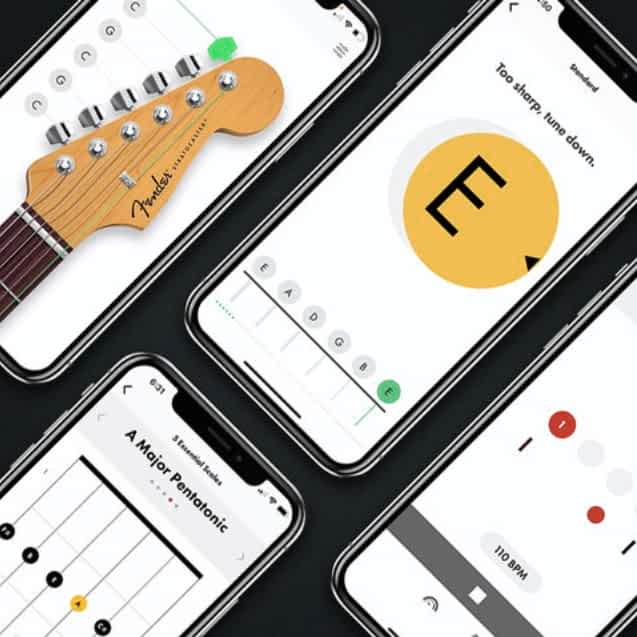
Tuning Techniques
1. Using a Tuner
If you’re new to tuning an electric guitar, using a tuner is the easiest and most accurate method.
Tuners are small devices that can detect the pitch of a string and tell you whether it’s too high or too low. You can find tuners at any music store or online.
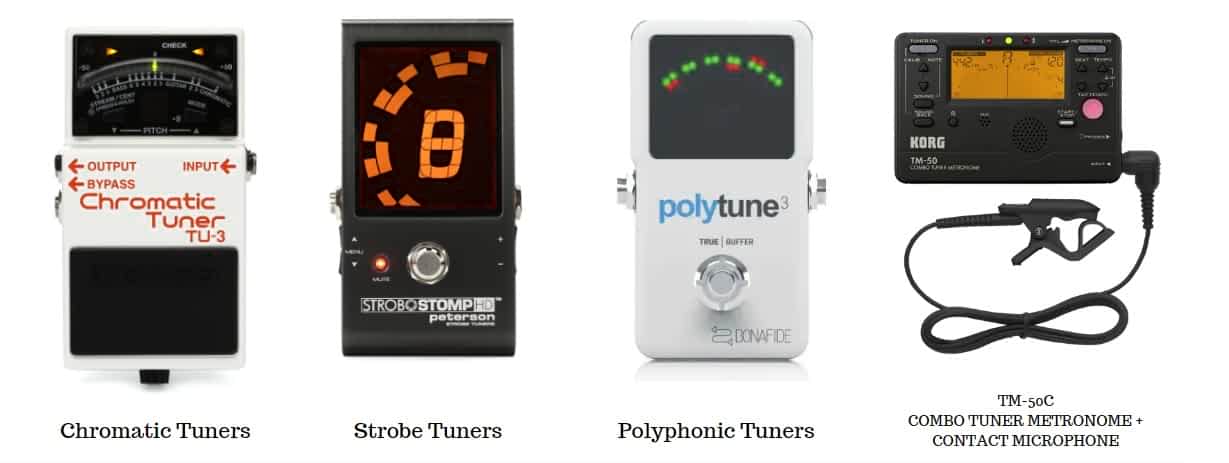
Steps on How to Tune Your Electric Guitar Using a Tuner
Clip the tuner onto the headstock of your guitar.
Pluck one string at a time and watch the tuner display.
.
The tuner will show you whether the note is too high, too low, or in tune.
.
Use the tuning pegs to adjust the pitch until the tuner shows that the note is in tune.
.
Use the tuning pegs to adjust the pitch until the tuner shows that the note is in tune.
.
Tuning by Ear
Tuning by ear involves matching the pitch of one string to another already in tune.
Steps on How to Tune Your Electric Guitar by Ear
Tune the low E string to a reference pitch, such as a piano or another guitar that is already in tune.
Play the fifth fret of the low E string and tune the A string to that pitch
.
Play the fifth fret of the A string and tune the D string to that pitch.
.
Play the fifth fret of the D string and tune the G string to that pitch.
.
Play the fourth fret of the G string and tune the B string to that pitch.
.
Play the fifth fret of the B string and tune the high E string to that pitch.
.
Online Tuning
Online Tuning
Steps on How to Tune Your Electric guitar using online apps
Open an online guitar tuner app on your device.
Allow the app to access your device’s microphone.
Pluck one string at a time and watch the app display.
The app will show you whether the note is too high, too low, or in tune.
.
Use the tuning pegs to adjust the pitch until the app shows that the note is in tune.
Repeat this process for all six strings.
.
Advanced Tuning
If you’re feeling adventurous, you may want to experiment with some alternate tunings. These can give your guitar a unique sound and open up new possibilities for your playing.
Here are a couple of popular alternate tunings to try out:
Alternate Tunings
Open G Tuning
Open G tuning is a popular tuning for blues and slide guitars. To tune your guitar to open G, follow these steps:
Tune your low E string down to a D.
Tune your A string down to a G.
Tune your D string down to a B.
Keep your G, B, and high E strings in standard tuning.
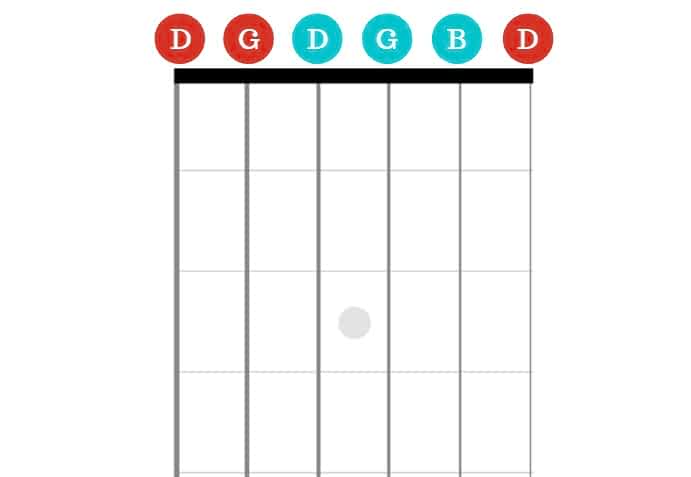
With open G tuning, you can play a G chord simply by strumming all the strings open. You can also play various other chords and slide up and down the neck to create a bluesy sound.
Drop D Tuning
Drop D tuning is another popular alternate tuning. To tune your guitar to drop D, follow these steps:
Tune your low E string down to a D.
Keep your A, D, G, B, and high E strings in standard tuning.
With drop D tuning, you can easily play power chords by simply fretting the low E string on any fret and playing the other strings open.
This tuning is popular in various genres, including rock and metal.
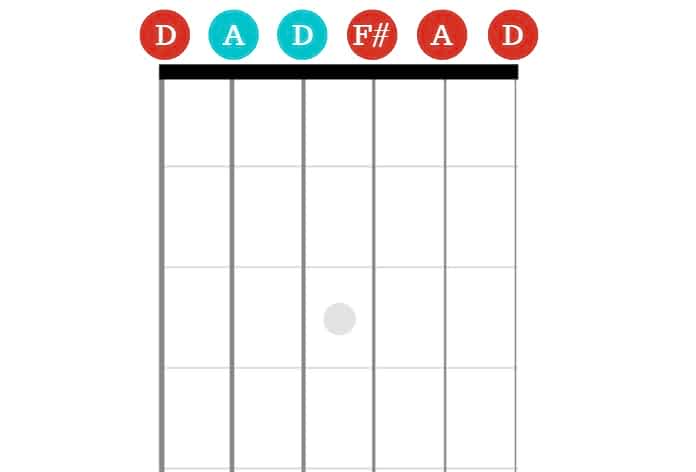
Slide Guitar Tuning
If you’re interested in playing slide guitar, you may want to try out an alternate tuning specifically designed for slide playing. Here’s a popular slide guitar tuning to try out:
Open D Tuning
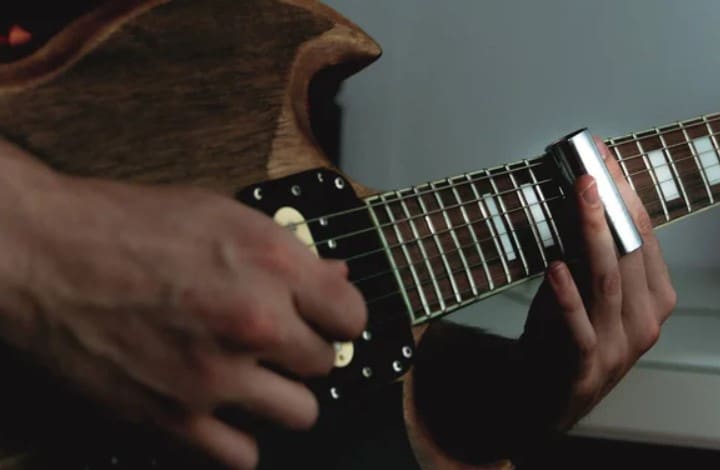
Open D tuning is a popular tuning for slide guitar. To tune your guitar to open D, follow these steps:
Tune your low E string down to a D.
Tune your A string down to a F#.
Tune your D string down to an A.
Keep your G, B, and high E strings in standard tuning.
You can play a D chord with open D tuning by strumming all the strings. You can also slide up and down the neck to create a variety of other chords and sounds.
Experimenting with alternate tunings can be a lot of fun, but it’s important to be patient and take your time.
Our 3 Recommended Electric Guitar Tuners for Beginners
Korg GA-50 Guitar Tuner
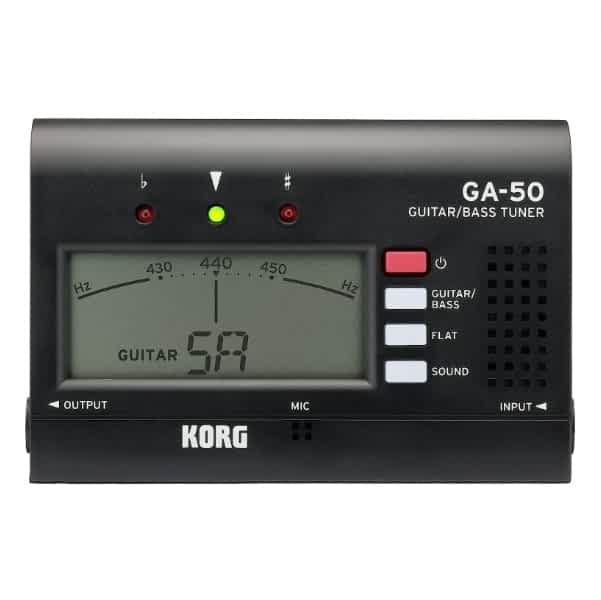
FEATURES:
- Improved display for easy
reading and quick, precise tuning
- Memory backup and excellent battery life allow up to
135 hours of use
- A stylish, compact tuner dedicated to guitar and bass
- Accommodates 7-string guitars and dropped tunings - accurate
- Does not have a built-in metronome
When you click ‘Check Price’, you’ll see there are loads of great places to buy this item. Our personal favorite is Sweetwater for the US, and Thomann and Gear4Music for the UK & Europe.
They are the largest music retailers, with excellent customer service, competitive prices, really fast shipping, and the longest guarantees.
The professional musician who wrote this article combined many things,
from the product build, manufacturer’s reputation through to feedback
from other users, to create our famous TedScore™.
D'Addario NS Micro Soundhole Tuner
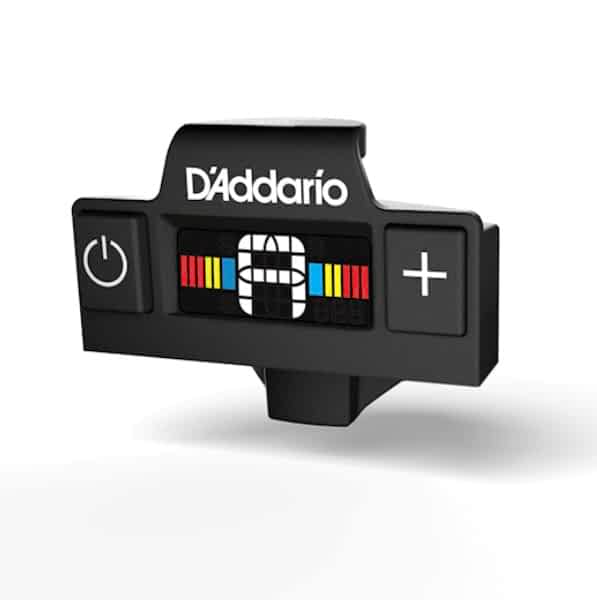
FEATURES:
- Improved display for easy
reading and quick, precise tuning
- Memory backup and excellent battery life allow up to
135 hours of use
- A stylish, compact tuner dedicated to guitar and bass
- Accommodates 7-string guitars and dropped tunings - accurate
- Does not have a built-in metronome
When you click ‘Check Price’, you’ll see there are loads of great places to buy this item. Our personal favorite is Sweetwater for the US, and Thomann and Gear4Music for the UK & Europe.
They are the largest music retailers, with excellent customer service, competitive prices, really fast shipping, and the longest guarantees.
The professional musician who wrote this article combined many things,
from the product build, manufacturer’s reputation through to feedback
from other users, to create our famous TedScore™.
Snark SN5X Clip-On Tuner

FEATURES:
- Its sturdy clip arm with swivel action ensures it
stays in position, and the high-resolution screen makes it easy to read
- Its upgraded tuning processor results in rapid and precise tuning
- With a high-definition display
- Rotates 360°
- Creates a well-calibrated tune
- Weaker plastic tabs due to low quality
When you click ‘Check Price’, you’ll see there are loads of great places to buy this item. Our personal favorite is Sweetwater for the US, and Thomann and Gear4Music for the UK & Europe.
They are the largest music retailers, with excellent customer service, competitive prices, really fast shipping, and the longest guarantees.
The professional musician who wrote this article combined many things,
from the product build, manufacturer’s reputation through to feedback
from other users, to create our famous TedScore™.
Maintaining Your Guitar's Tune
Keeping your electric guitar in tune ensures it sounds great and plays well. Here are some tips to help you maintain your electric guitar tune.
Effects of Temperature and Humidity
Temperature and humidity can have a significant impact on your guitar’s tune. Changes in humidity can cause the wood to expand or contract, affecting the strings’ tension and the guitar’s overall pitch. Similarly, temperature changes can cause the metal tuning pegs to expand or contract, affecting the guitar’s tune.
Storing your guitar in a cool, dry place is a good idea to avoid these issues. You can also use a humidifier or dehumidifier to regulate the humidity levels in the room where you keep your guitar.
String Tension and Sustain
The strings’ tension and the guitar’s sustain can also affect its tune. Over time, the tension of the strings can change, causing them to go out of tune.
Also, if the strings are worn or old, they may not sustain notes as well, which can also affect the guitar’s tune.
To maintain your guitar’s tune, it’s essential to regularly check the tension of the strings and replace them when necessary. You can adjust the guitar’s intonation to ensure it plays in tune across all frets.
Practising Tuning
Tuning your electric guitar is a crucial step in playing music. It might take some time for a beginner to get the hang of it, but with practice, you can tune your guitar quickly and accurately.
To practice tuning, you will need to start by understanding the pitch. Pitch is the highness or lowness of a sound. The standard pitch for an electric guitar is A440, which means the A string should vibrate at 440 Hz. You can use an electronic tuner or a reference pitch, such as a piano or a tuning fork, to tune your guitar.
Practicing tuning regularly is important to develop your ear and become more accurate. You can also try tuning your guitar by ear, which is a valuable skill when you don’t have access to an electronic tuner.
How to Tune an Electric Guitar
A Recap
Yay! You have successfully tuned your electric guitar. Tuning an electric guitar may seem daunting at first, but it will become second nature with practice.
Remember, there are various ways to tune your electric guitar, including using an electric tuner, microphone-based tuner, or even a tuning app. Experiment with different methods to find what works best for you.
When tuning your electric guitar, adjust the tuning pegs slowly and carefully. Use a microphone or a piano to ensure your guitar is in tune with other instruments.
Keeping your guitar in tune is essential to ensure it sounds its best. A well-tuned guitar will also make playing and learning new songs more accessible.
So, tuning an electric guitar is essential for any guitarist. With practice and patience, you can tune your guitar quickly and accurately.
So, keep practicing and enjoy playing your perfectly tuned electric guitar!
Wait, we got more for you!
Are you ready to rock?!
Jump into the next post because our list of The Best Electric Guitars Under 1000 is here, and it’s guaranteed to have you shredding like a pro without breaking the bank!
FAQ's
The standard tuning for an electric guitar is E-A-D-G-B-E, starting from the lowest-pitched string to the highest-pitched string. This tuning is known as “standard E tuning” or “concert pitch tuning.”
To tune an electric guitar, you can use a guitar tuner or tune by ear using a reference pitch. Pluck each string individually and adjust the tuning pegs until the pitch matches the desired note.
There is no “best” tuning for an electric guitar, as it ultimately depends on the player’s preference and style of music. However, standard tuning (E-A-D-G-B-E) is the most common and versatile tuning for electric guitars.
Yes, you can tune electric guitars like acoustic guitars using a tuner or by ear using a reference pitch. The tuning process is the same for electric and acoustic guitars.
Your electric guitar tuner should be set to the standard tuning of E-A-D-G-B-E. Some tuners may have alternate tuning options, such as drop D or open G, which can be selected as needed.




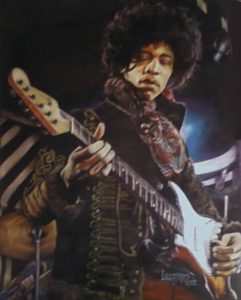







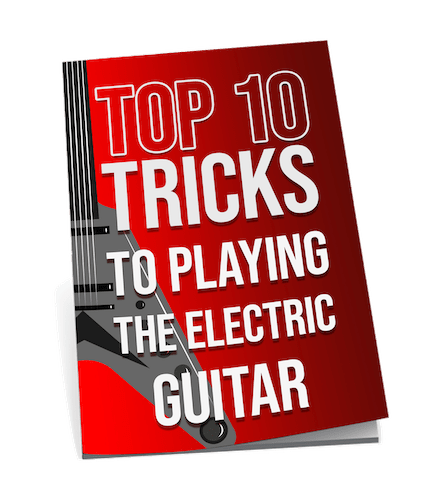
Awesome article! Learned a lot about guitar tuning I never knew before. Thanks for sharing this info!
While I agree with most points in the article, I think the emphasis on electronic tuners might discourage beginners from developing their ear. It’s vital to use both, as the electronic tuner won’t always be around, especially in a live situation. And, the part about temperature and humidity affecting the tuning is super important – more newbies need to be aware of how these factors can ruin a perfect tuning.
So should I start with the tuner or try without it?
Totally get what you’re saying about developing the ear. It’s a crucial skill.
The part about alternate tunings is spot on. Open G and Drop D offer such a different vibe to the music. Its like a new world of sound opens up.
Drop D makes everything sound epic, even my noodling lol
Hey Lewis Turner, just started learning guitar and came across your article. I’m curious about tuning by ear, you mentioned some tips but i’m wondering if there’s a certain technique to get better at it? Feels a bit tricky to catch the right notes just by listening.